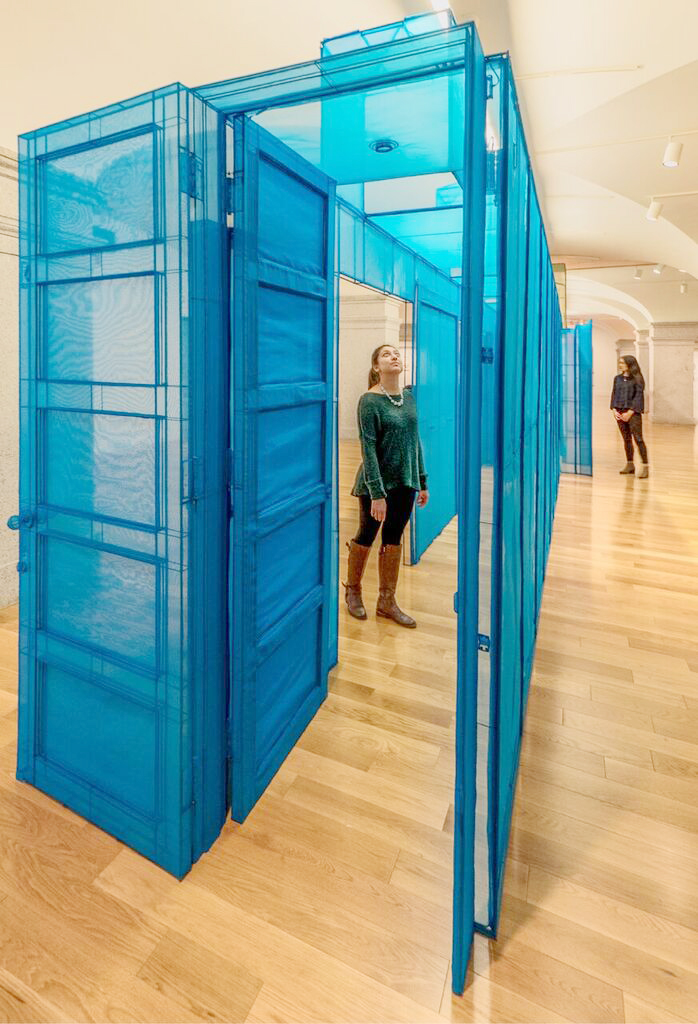[ad_1]
By Maria Anderson
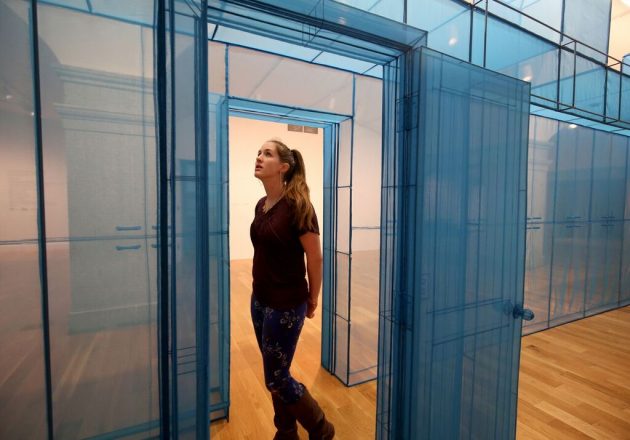
A visitor in the Smithsonian American Art Museum exhibit “Do Ho Suh: Almost Home” (Photo by Libby Weiler)
Internationally renowned artist Do Ho Suh creates immersive fabric installations, inviting you to step into his former homes.
His sculptures offer a glimpse into his life, through his memories, while also exploring concepts of migration, national identity and ultimately the homes left behind.
“Suh’s work is very personal,” says Sarah Newman, the James Dicke Curator of Contemporary Art at the Smithsonian American Art Museum. “He reconstructs his past homes and lets us into his memories.”
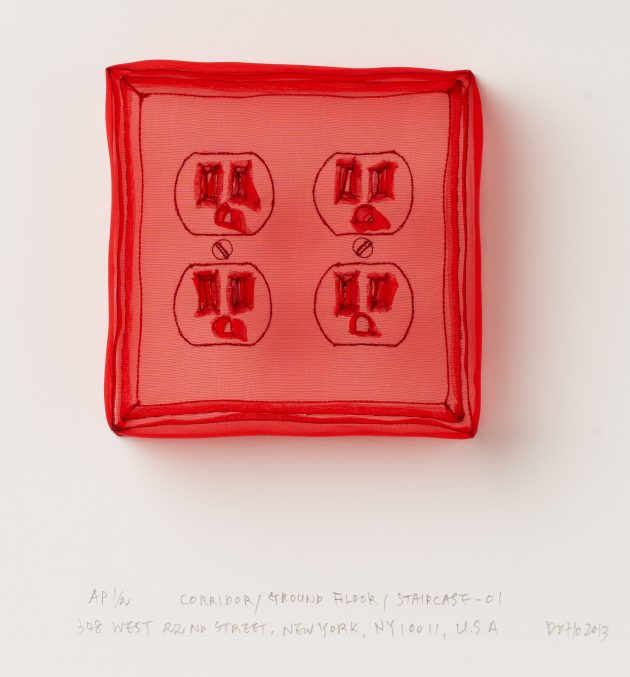
Do Ho Suh, Corridor/Ground Floor/Staircase 1, 348 West 22nd Street, New York, NY 10011, USA, 2013, polyester fabric and stainless steel armature, Collection of Donna Perret Rosen and Benjamin M. Rosen © Do Ho Suh. Courtesy the artist and Lehmann Maupin, New York and Hong Kong. (Photo: byTaegsu Jeon )
The artist was born in Korea and moved to the U.S. at the age of 29, and currently lives between New York, London and Seoul. Newman organized “Do Ho Suh: Almost Home,” the first major exhibition of Suh’s work on the East Coast, currently on view at the museum.
Suh constructs his sculptures out of colorful, sheer fabric. Their ethereal look contrasts with the ordinary nature of the material. He uses cheap polyester commonly used to make Korean summer clothes, which is inexpensive, readily available and has a strong connection to traditional Korean dressmaking.
“In Korean, the word ‘jitda’ means both to make a dress and to make a house,” Newman says. “Through his work, Suh makes a direct connection between a dress and a house as being intimate spaces around us. They are personal, yet outward facing.”
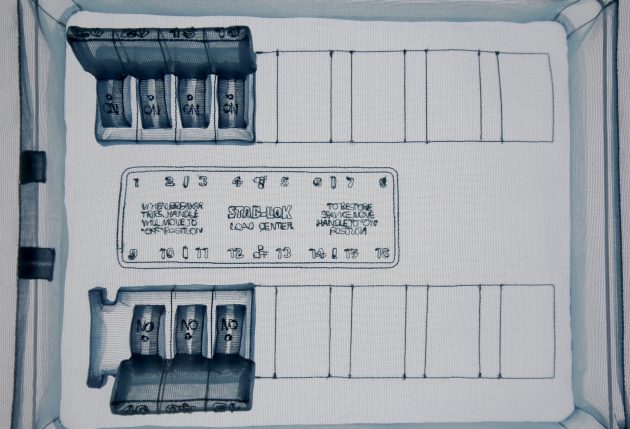
Circuit breaker (detail) from “Do Ho Suh: Almost Home,” at the Smithsonian American Art Museum. (Photo by Libby Weiler)
Suh has spent years learning traditional techniques from Korean seamstresses. He and his studio assistants take painstaking care to hand stitch every detail of his sculptures. All the labels on a fabric fire extinguisher, for example, are perfectly legible. Intricate details on an ornate door handle are clearly visible. His works represents thousands of hours of exacting labor.
Along with traditional dressmaking techniques, Suh uses high-tech 3D mapping and modeling programs that provide exact measurements. The stainless steel frames that form the sculptures’ skeletons are perfectly accurate in scale, from the smaller doorways in his Korean hallway to the microwave oven in his New York apartment.
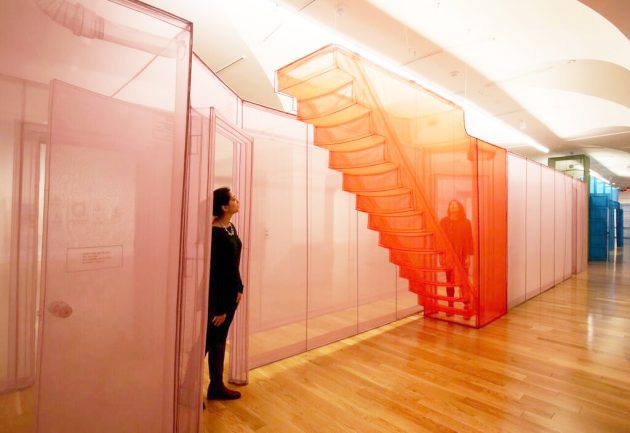
A visitor explores “Do Ho Suh: Almost Home,” at the Smithsonian American Art Museum (Photo by Libby Weiler)
The use of traditional and modern techniques mirrors Suh’s exploration of the past merging with the present. He recreates places and things from his past to live in their presence.
He refers to his installations as “suitcase homes” because they can be folded and carried anywhere, to be opened and installed again and again.
“Suh often refers to the snail, and its ability to carry its home with it wherever it goes,” Newman explains. “He’s very interested in the idea of always having your home with you.”
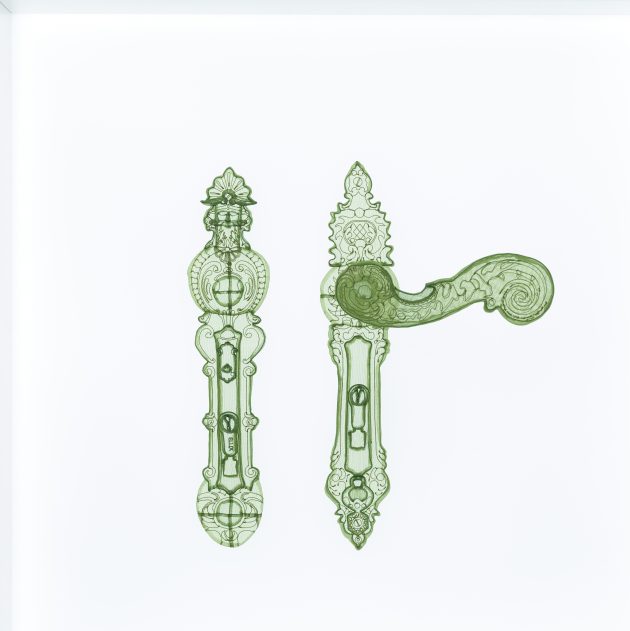
Do Ho Suh, Doorknob, Wieland Strasse, 18, 12159 Berlin, Germany, 2016, polyester fabric, stainless steel armature, and display case with LED lighting, Private collection. © Do Ho Suh. Courtesy the artist and Lehmann Maupin, New York and Hong Kong. (Photo: Taegsu Jeon)
This desire to carry his home with him also speaks to his experience as an immigrant—existing between cultures and making a life in a new place while still keeping ties to his heritage and traditions.
Yet the concept of leaving home goes beyond the immigrant experience. Everyone knows what it’s like to leave a home at some point or another.
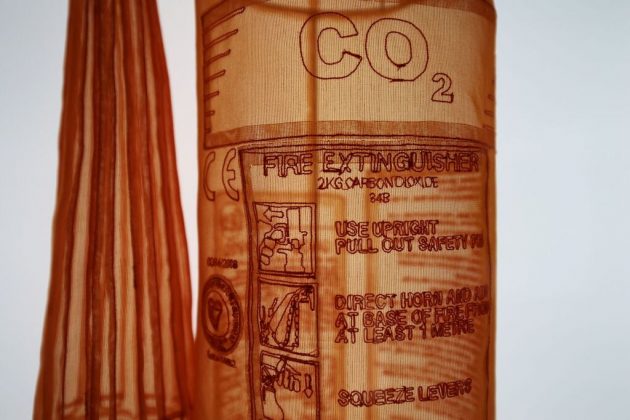
Detail of a fire extinguisher in “Do Ho Suh: Almost Home,” at the Smithsonian American Art Museum (Photo by Libby Weiler)
Through his work—inviting us into his home—Suh asks us to consider our own past homes, memories and experiences.
“It’s a very intimate exchange between the artist and the visitor,” Newman says.
“Do Ho Suh: Almost Home” is on view at the Smithsonian American Art Museum through August 5, 2018.
[ad_2]
Source link

